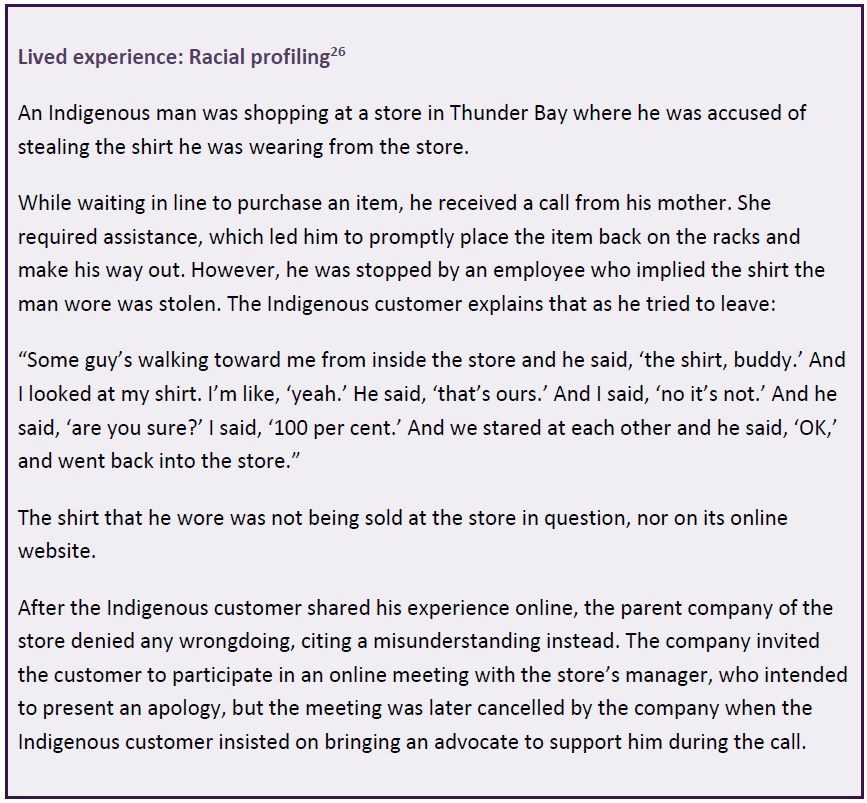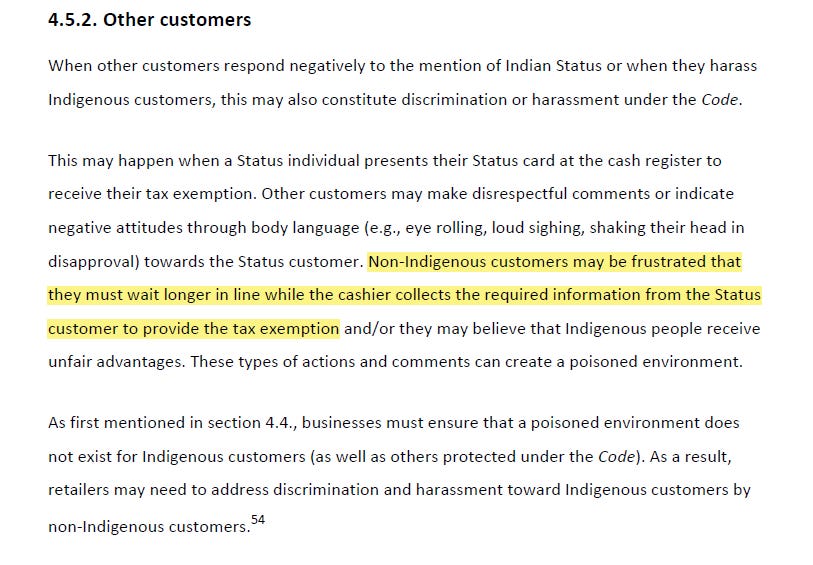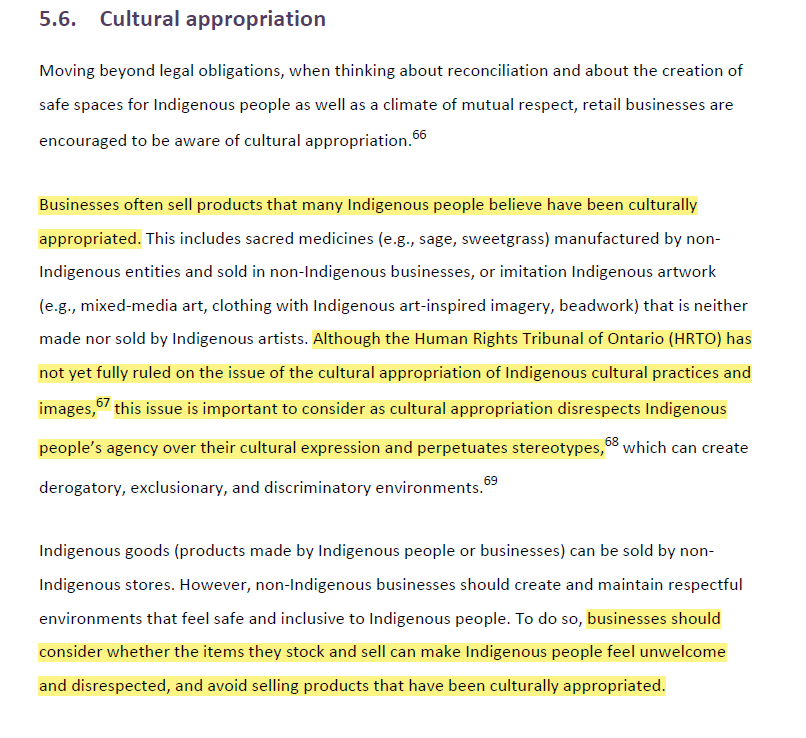Selling Indigenous-themed inventory may be discrimination: Ontario Human Rights Commission
New guidance by the Ontario Human Rights Commission on anti-Indigenous discrimination could spell trouble for retail businesses and lead to a chilling effect on speech.
Author: Melanie Bennet
New guidance by the Ontario Human Rights Commission on anti-Indigenous discrimination could spell trouble for retail businesses and lead to a chilling effect on speech according to some civil liberties advocates.
The commission recently put out a “Combatting anti-Indigenous discrimination and harassment in retail settings” notifying retail store owners that they could be held responsible for discrimination for how other customers react to Indigenous shoppers, stocking Indigenous-themed items that may be deemed “inappropriate” and providing “slow service.”
Recent Ontario Human Rights Commission guidance on anti-Indigenous discrimination in retail settings places a legal obligation on retailers to monitor and respond to the reaction of non-Indigenous customers. Not doing so may lead to a determination that the retailer has created a “poisonous environment.”
The guidance warns against what it calls racial profiling, which it says can include “unkind remarks,” “tones,” or “being ignored” by staff or security. It offers an example of alleged profiling, citing a complaint by Tyler Robinson in Thunder Bay. In a 2022 interview, Robinson described his experience: “There’s a certain feeling you get when people are being racist towards you,” he said, adding “You know, when you see somebody, and they light up, you know that feeling, that vibe. And that was the bad vibe I got from that guy.”
Businesses are advised that they may be liable if they create a “poisoned environment” that makes Indigenous people feel unsafe. The guide describes this as comments or actions that cause an Indigenous person “to feel that the environment is hostile or unwelcoming.” It does not provide an objective measure for this standard beyond the feelings or perceptions of the person affected.
The Ontario guidance outlines several situations that may create a “poisoned environment.” These include stocking “Indigenous-themed merchandise,” speaking to an Indigenous customer in a “rude” way, or providing “unpleasant” or “slow service.” It also recommends that retailers create “safe spaces” by ensuring Indigenous shoppers and staff do not experience discrimination, harassment, or “other criticism.”
While the Code protects against discrimination and harassment, there is no statutory requirement to shield customers from all forms of criticism. That this broad language could incentivize businesses to be vigilant of lawful speech to avoid the risk that disagreement or a casual remark might be construed as discrimination.
The guidance also addresses interactions between customers, “When other customers respond negatively to the mention of Indian Status or when they harass Indigenous customers, this may also constitute discrimination or harassment under the Code.” As a result, “retailers may need to address discrimination and harassment toward Indigenous customers by non-Indigenous customers.”
The guidance suggests retailers are responsible for managing the speech and conduct of third parties who are not their employees. Because “negative experiences” are undefined, even lawful expressions such as a comment about tax policy could trigger intervention. Businesses may feel compelled to control the speech of customers or avoid certain interactions entirely, creating a chilling effect in spaces where lawful speech would normally occur.
Free Speech Union of Canada Executive Director Lisa Bildy is concerned about the implications. “This is overly broad and puts an unreasonable burden on the retailer to police the speech of customers. How much is enough to create a ‘poisoned environment’? Can the retailer be liable for just one comment by a customer that they couldn’t have anticipated? That is not clear but is certainly a possibility,” she said. “Employers can be vicariously liable for the actions of their employees, but extending that legal concept to random customers, who have no personal responsibility under the Human Rights Code in these circumstances, is a bridge too far.”
In Britain, Labour’s proposed Workers’ Rights Bill could impact freedom of expression in a similar way. The bill would reintroduce an employer’s duty to prevent harassment by customers, exposing businesses to liability for “overheard conversations.” The Free Speech Union UK warns that the vagueness of harassment definitions could cause pubs, restaurants, and shops to monitor and pre-emptively restrict discussions of controversial topics to avoid legal risk.
The guide also labels inventory believed to be “culturally appropriated” as discriminatory. It states that businesses “often sell products that many Indigenous people believe have been culturally appropriated” and that “businesses should consider whether the items they stock and sell can make Indigenous people feel unwelcome and disrespected.” This framing, based on beliefs and perceptions, creates uncertainty for retailers about what items might be acceptable. To avoid complaints, businesses might choose to remove anything that could be interpreted as Indigenous in origin, including art, clothing, or Canadiana-themed merchandise like a stuffed toy canoe.
In America, similar trends led to Indigenous erasure. In 2020, Land O’Lakes brand removed “Mia,” the Native American “butter maiden” who had appeared on packaging for decades, following criticism that the depiction was a racist stereotype. While intended to combat harmful imagery, such removals often eliminate Indigenous representation from mainstream visibility.
Guidance documents like these carry real weight. Under Ontario’s Human Rights Code, the Tribunal must consider the Commission’s guidance if a party requests it. The Commission can also intervene in proceedings to argue that its guidance be followed. This gives the document significant practical authority.






